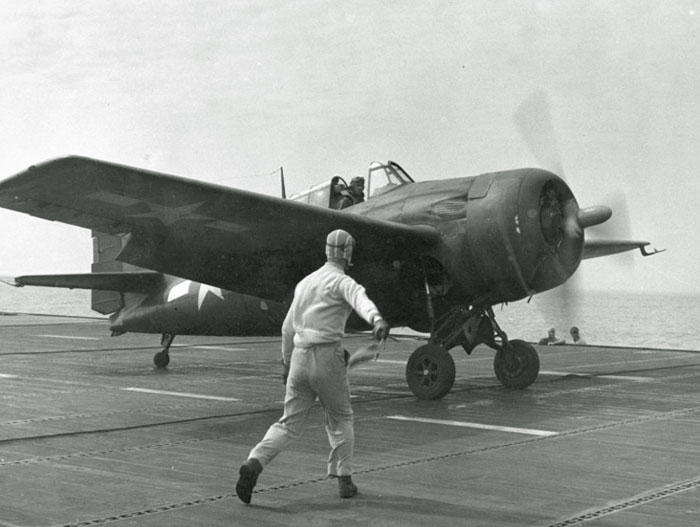Wildcat Pilot Training On Lake Michigan
This Second World War image of a pilot in his F2M Wildcat on the deck of the training carrier USS Sable somewhere on Lake Michigan belies the danger such practice take off and landings really entailed. For instance both the USS Sable and USS Wolverine were converted paddle wheel coal powered steamers capable of making 18 knots at best.
“Wind over deck” (WOD) is a concept few non-carrier aviators understand. Suffice it to say it was a crucial component in getting Second World War era aircrat into the sky off a carrier deck. The U.S. Navy recommended minimums of 30 knots WOD were needed to provide for a relatively safe operating environment for heavy carrier aircraft such as the Wildcat pictured or the larger F6F Hellcat, TBM Avenger or SBD Dauntless. In addition, the aviators in training had it even worse than their fully qualified peers at sea on operational aircraft carriers which were very different than the USS Sable or Wolverine.
Maintaining forward speed on take-off was even more essential on the Great Lakes training carriers because their flight decks were much closer to the water than those of say the big Essex Class fleet carriers. Thus if a pilot couldn't generate enough speed, would dip upon clearing the bow and given the low flight decks of the training carriers this was often enough to put the trainee into the drink.


